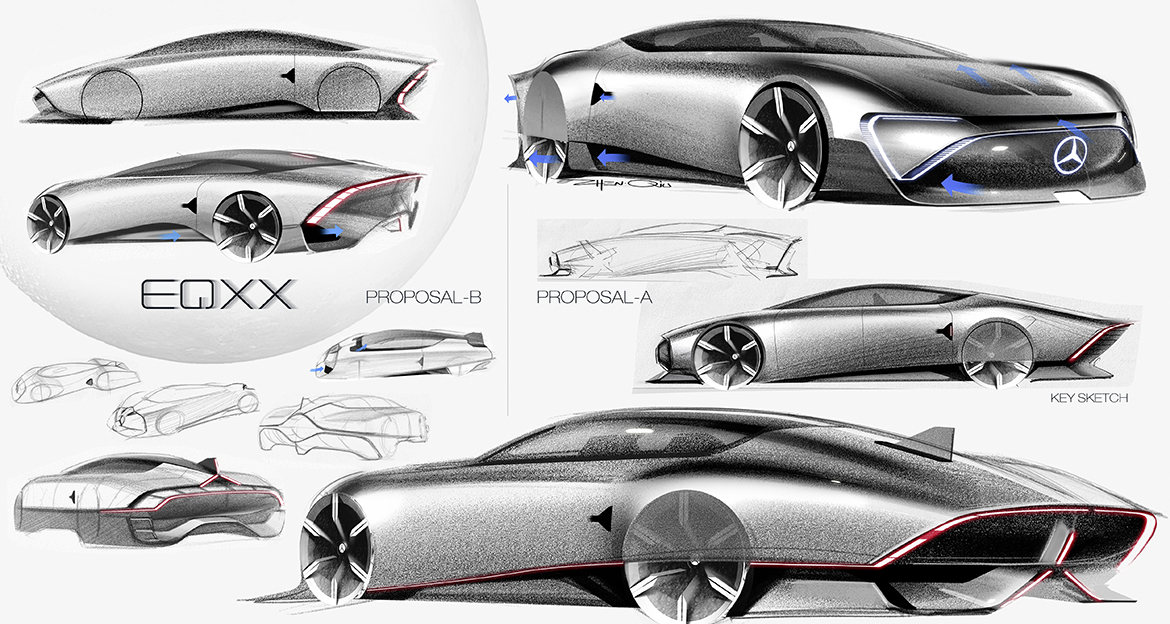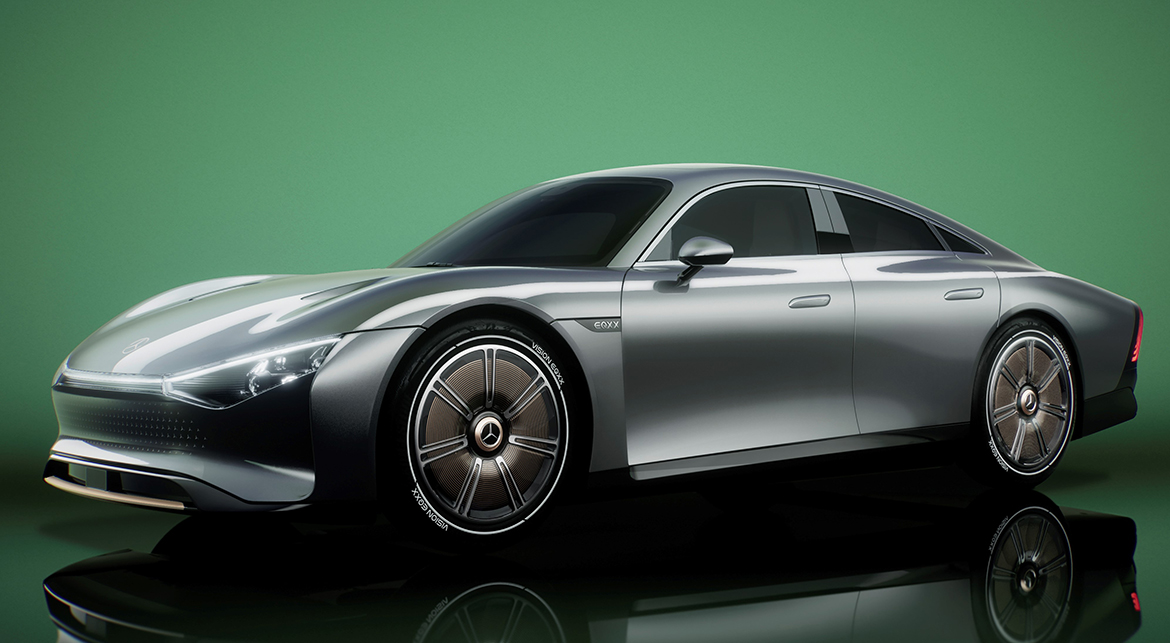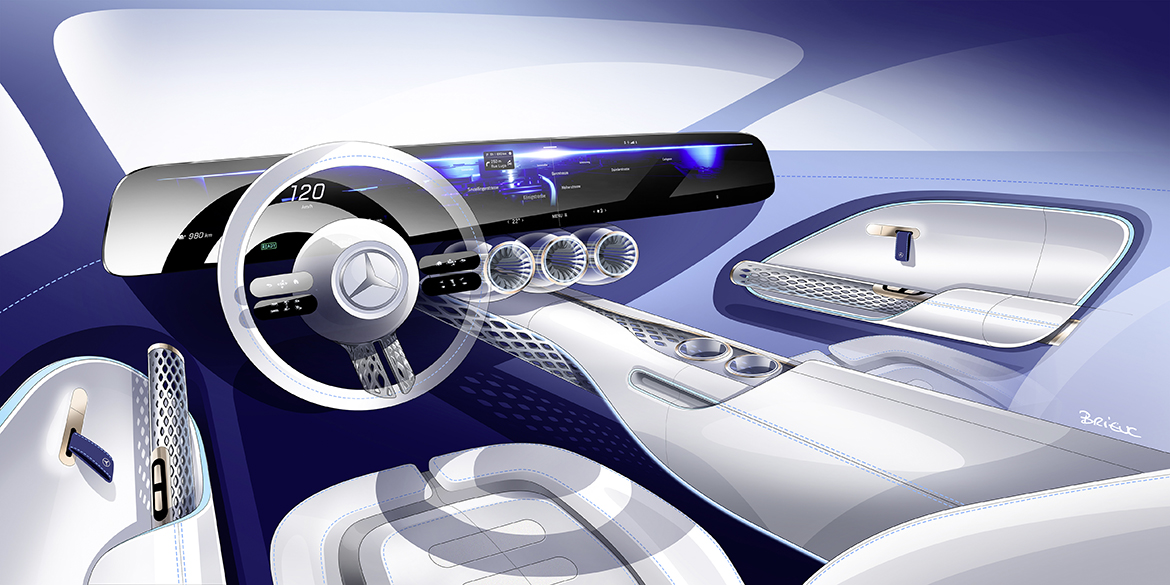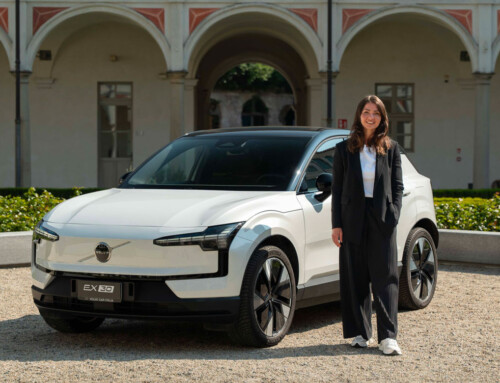Technology and efficiency come together in the Mercedes-Benz EQXX project, an electric concept car with a range of over 1,000 kilometres and an aerodynamic drag coefficient of 0.17. This is a key figure, which is at the heart of the design of this car because the designers have kept in mind how much air resistance can affect the vehicle’s overall range.
“The Vision EQXX is a vision of the future that embodies the desire for the luxury of the future created by Mercedes. As designers, we always think in terms of technology and aesthetics. The aerodynamics of this car are a fusion of these two elements, perfectly in line with our philosophy of Sensual Purity. We have created spectacular proportions that combine beauty and efficiency,” says Gorden Wagener, Daimler’s head of design. The design team dedicated a great deal of work to integrating the meticulous passive and active aerodynamic features into the volumes of the Vision EQXX. The result was achieved quickly, using advanced digital modelling techniques to achieve a compromise that reduces drag while retaining the sensual purity of the Mercedes-Benz design language and the practicality of a road car.
Despite its small frontal area, the front of the EQXX conceals some key elements such as the energy-saving headlamps. Each headlamp is made up of two star-shaped elements, the larger of which houses the low and high beam light clusters behind a polished central lens. This arrangement, combined with the 2D star motif on the front bumper, provides a preview of the front-end design details that will feature in future Mercedes-Benz models. The surfaces of the EQXX prototype flow smoothly from the front, developing powerful yet sensuous shoulders above the rear wheel arches. This natural flow concludes with an aerodynamically defined tear-off edge, accentuated by a glossy black end trim, punctuated by the rear light clusters.
Painted in Mercedes-Benz alubeam silver, the body flows elegantly like a drop of water towards the rear. The retractable rear diffuser is a powerful example of the collaboration between design, aerodynamics and engineering, and only opens at higher speeds when air has an increasingly impactful effect on aerodynamics. When retracted, it is built into the bodywork, a choice that allowed the designers to preserve the balance, proportions and light aesthetics of the rear.














